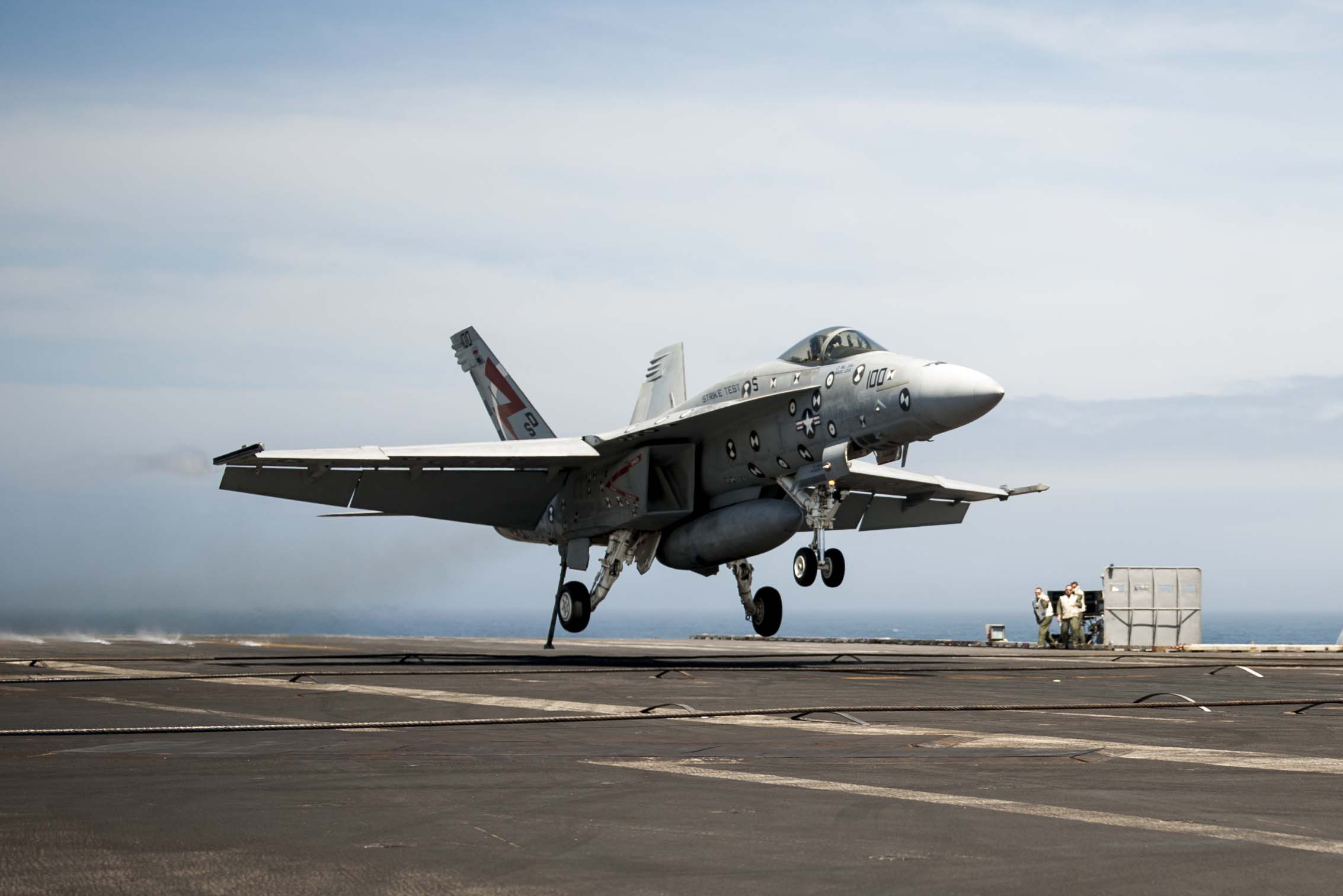
The Defense Department’s first Lab Day at the Pentagon last week celebrated both the innovative research taking place in the research community as well as military leadership’s new emphasis on pushing innovation across the services, those in attendance said.
For the research community, the last few years haven’t been easy. Budget cuts and sequestration led to travel restrictions that kept scientists and engineers from attending conferences and meeting others in their fields. And research and development budgets have been a tempting source of funding for budgeters struggling to keep acquisition programs fully funded.
But Lawrence Schuette, the Office of Naval Research’s director of research, told USNI News at DoD Lab Day that the event was a chance to get researchers meeting face-to-face again, and that the Navy would begin hosting “innovation jams” in fleet concentration areas to get a variety of warfighting and research communities together to talk about new ideas.
Schuette said former defense secretary Chuck Hagel’s November 2014 memo on defense innovation gave the service secretaries an opportunity to go after innovation, and the Navy has gotten off to an especially quick start.
Secretary Ray Mabus stood up a Naval Innovation Advisory Council in late April, and a crowdsourcing platform, Hatch, launched on Wednesday.
“The dollars are fixed or going down, so how can you do something in a more clever way?” Schuette said.
“We’re going to do this ground-up, top-down, let’s meet in the middle” to solve problems facing the Navy and Marine Corps.
DoD Lab Day brought out a variety of examples of low-cost, high-yield innovative ideas, including the Wireless 3D Facial Recognition Binocular System from Space and Naval Warfare Systems Command (SPAWAR) Systems Center Atlantic and the Magic Carpet carrier landing assistance tool from Naval Air Systems Command (NAVAIR).
3D Binoculars
SPAWAR Systems Center Atlantic in Charleston, S.C., has three prototype binoculars program officials hope to send to U.S. Central Command “soon” to gather feedback. The binoculars allow facial recognition from 255 meters out and can send an image to a laptop via a Wi-Fi connection. The computer then searches a database to see if any of the faces in the image match any people on watch lists or otherwise of interest.
The program office took the power of a large telescopic lens and shrunk it down to a five-pound pair of binoculars that could be used at checkpoints, before conduct visit, board, search and seizure (VBSS) missions or in other situations where positively identifying dangerous individuals would be important, Chris Outlaw told USNI News during Lab Day.
Outlaw said U.S. Central Command and U.S. Special Operations Command are interested in increasing the range to as great as 500 meters, as well as expanding the database to include object identification in addition to facial recognition.
Program manager Michael Richmond said that “at that range, we’re dealing with atmospheric distortion issues and turbulence. Those are really the challenges we would have to overcome to be able to push the distance out.” Adding object recognition would be a software upgrade.
He added the program is awaiting a contract modification to put the three prototypes out into the field “soon” for user feedback.
Magic Carpet
NAVAIR senior engineer Buddy Denham said Magic Carpet creates two advantages for pilots trying to land on an aircraft carrier.
First, it turns control of the plane’s throttle and angle of attack over to flight control computers, allowing the pilot to focus on the glidepath instead of thinking about metrics like engine revolutions per minute.
“When he’s trying to do lineup and is banking left and right to line up, that will cause the airplane to settle today, and he has to get back into what he was happy with, the flightpath,” Denham said.
“Now [with Magic Carpet], he’s not having to do the gymnastics and mathematics in his head.”
Second, it provides an enhanced heads-up display (HUD) symbology that gives direct feedback on the flightpath corrections, taking the guesswork out of trying to land on a carrier.
Denham said NAVAIR installed the two software changes into Super Hornets aboard USS George H.W. Bush (CVN-77) and performed 200 landings from April 20 to 22. The tests showed the pilots performed better with the system, having better control over where their tailhooks hit with less work during approach.
The Bush testing was the phase 1 proof of concept demonstration, he said. The second phase, expected next year, will bring the system out to the fleet and conduct degraded mode testing and other software tests. Denham said he hopes to field the system by 2018. He said the Magic Carpet software would go on Super Hornets, and the Navy is working with Lockheed Martin to incorporate it into the F-35C Lightning II Joint Strike Fighter.





